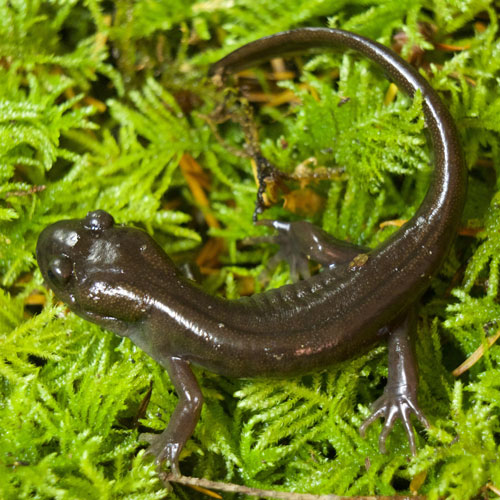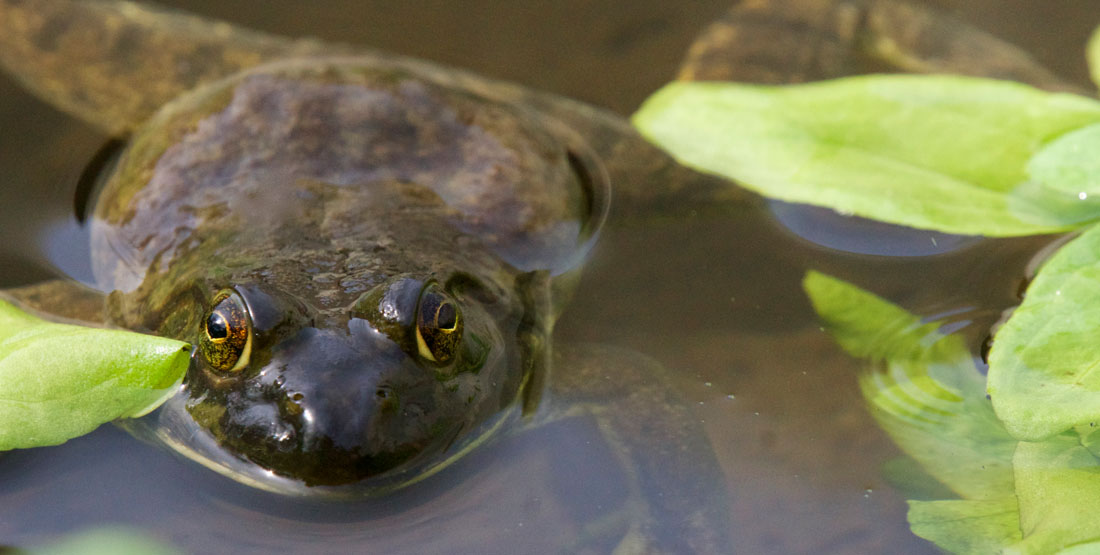There used to be so many frogs here when I was young, where did they all go?
Many frog populations have disappeared in Washington state. Frogs do not adapt well to changing environmental conditions. Humans have destroyed or altered many amphibian habitats by development, damn construction, agriculture and pollution. These components squeeze amphibians out of their natural environment and often there is no place for them to go and the populations die out.
Do we have non-native/invasive frogs in WA?
Yes! There are currently two nonnative amphibian species found in Washington.
- The Bullfrog (Rana catesbeiana) was introduced in Washington state in the 1930’s for sport and game (people like to hunt and eat bullfrogs!) Their original range is the Eastern half of the United States. Unfortunately, bullfrogs have colonized many areas in Washington state with devastating effects to local amphibians and other species. Bullfrogs are the largest frog in North America and will eat anything they can catch and fit into their mouth! They outcompete local for food and they also eat many small local frogs.
- The Green frog (Rana clamatins) is also an invasive amphibian in Washington state. Their natural range is in the eastern United States. They are not as widespread as the invasive bullfrog and have been seen in Whatcom, king and Stevens County. They are not as large as the bullfrog but still can have devastating effects on local amphibian species by outcompeting them for resources such as food and breeding grounds.
How did bullfrogs get to Washington state if they aren’t from here?
People brought them. Bullfrogs were introduced to Washington state in the 1930’s as a food and gaming source. Ironically, they were never used for either and instead have taken over many low elevation areas in Washington state. They breed fast (each female can lay 20,000 eggs per clutch and can breed multiple times in a year). Their tadpoles are distasteful, giving them a high rate of survival. They are fierce competitors with voracious appetites often times will wipe out native amphibian populations.
Are there any amphibians in the desert?
Yes! Amphibians are found in almost all types of environments including deserts. Because amphibians generally have moist permeable skin, it is sometimes strange to think that they could do well in hot, dry conditions. However, amphibians are very versatile and have established many adaptations to survive in such environments. Some desert toads bury themselves underground and only come out every few years when a good rain comes down to breed in temporary pools. Other frogs or toads secrete wax that they coat their skin with to protect themselves from drying out. Others are active only at night when temperatures are cool.
Do any amphibians live in salt water?
Yes, the crab-eating frog can survive in brackish water because they can hold their urine in their body to help maintain proper internal salt balance. The crab-eating frog develops in freshwater but hunts for food in mangroves, marshes and coastal scrubs throughout SE Asia. The Marine toad (also known as cane toads) was originally named Bufo marinusbecause it was thought that they lived in fresh and salt waters. This is not true, they are only found in freshwater. However, studies have shown that the tadpoles of marine toads cane live in slightly brackish water, but they are not found in brackish water in the wild.

Amphibians & Reptiles of Washington
Do you know where rattlesnakes live in our state? Or which salamander breathes through its skin? Explore the fascinating diversity of the 26 species of amphibians and 28 reptiles found in Washington state.

